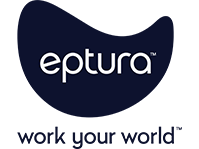
When organizations struggle with facility management systems, the data they need to make a strong business case to move to a more effective platform is often already inside the current system.
Key takeaways
- Find the data you need: The existing facility management system contains valuable data that can be used to highlight its shortcomings and make a strong case for switching to a better platform
- Identify the root causes of the problem: Dig into the root reasons why the current system isn’t working, such as multiple disconnected point solutions, poor implementation, or a fundamental mismatch between platform capabilities and business needs
- Build a cross-functional business case: When making a case for change, highlight the impact on various departments, such as HR, finance, and IT, and demonstrate how a smarter solution helps address specific challenges and support organizational goals
By looking closely at your current system, it can be possible to build a compelling case for change, highlighting inefficiencies, gaps, and missed opportunities that can be addressed by adopting a more streamlined, efficient, and scalable solution.
Start by identifying what’s not working and why
Before you can make the case for a new platform, you need to articulate why the current system doesn’t meet your needs. Here, you’ll have to go beyond general frustration and dig into the specific root causes.
Every situation is a different, but there are some common reasons teams need a new system, including:
- Multiple, disconnected point solutions: The team uses separate tools for work orders, inspections, asset tracking, and vendor management. Because the systems don’t talk to one other, there’s duplicate data, manual work, and reporting headaches
- Poor implementation and low adoption: The software might have had some potential, but the provider rushed the rollout, failed to train your team, and never configured their product to match your workflows. Now no one wants to use it
- Fundamental mismatch between platform capabilities and business needs: Your organization has grown, and you’re managing more locations, assets, and overall complexity. The software hasn’t kept up, though, because it lacks mobile access, predictive maintenance tools, or the ability to scale across sites
All of these are common, but the problem of too many platforms is especially widespread. In fact, 58% of organizations cite multiple data dashboards as one of their biggest challenges when analyzing organizational data, while 55% struggle with the time it takes to accumulate meaningful data across different systems, and 37% require 11 or more full-time employees just to collate, analyze, and report on operational data, according to Eptura’s 2025 Workplace Index report.
Ask lots of questions and audit the whole tech stack
To figure out which issues apply to your situation, begin by talking to your team. Technicians, supervisors, and coordinators interact with the system every day, and they’re often the first to spot inefficiencies.
Ask them questions to pinpoint what’s slowing them down, including if they’re avoiding the platform altogether or still relying on spreadsheets, paper forms, or text messages to manage tasks? If that’s the case, it’s a clear sign the system isn’t supporting workflows. Further feedback can reveal whether the issue is usability, lack of mobile access, or poor configuration.
Next, take a close look at your workflows. Examine how the team creates, assigns, and tracks work orders. Is the process smooth and intuitive, or does it involve multiple manual steps and workarounds? If your team has developed informal systems outside the platform just to get things done, that’s a red flag. A good platform should streamline operations, not force your team to build their own solutions.
Then, audit your tech stack. List every digital and manual tool your team uses for maintenance, inspections, asset tracking, vendor management, and reporting. Identify any overlap, gaps, and missing integrations. If your team is logging into five different systems to complete a single task, you’re dealing with fragmentation that’s costing time and creating risk.
Finally, compare your platform’s capabilities to your organization’s operational goals. If your company is focused on energy efficiency, compliance, or managing multiple locations, does your current system support these priorities? Can it track energy usage, automate compliance reminders, or provide visibility across sites? If not, it’s likely misaligned with your broader strategy.
Look for proof of problems inside the software
A powerful way to demonstrate your current facility management solution isn’t working is to use data from the software. When a system is underperforming, the evidence often lives inside the tools you’re hoping to replace. Depending on the root cause, you can surface different metrics that reveal inefficiencies, gaps, and missed opportunities.
By pulling this data directly from your existing system, the evidence makes your case for switching platforms more credible, more urgent, and much harder to ignore.
Too many tools slowing everything down
Using separate systems for inspections, asset tracking, work orders, and vendor management might seem manageable at first. But over time, this patchwork of point solutions creates friction that slows down your team and complicates reporting.
To show how fragmentation is affecting your operations, look for signs like these in your platform data:
- Duplicate records across systems: Check for repeated entries in asset logs, inspection reports, or work orders. If the same equipment or task appears in multiple formats, your team is likely re-entering data manually
- Manual reporting time: Measure how long it takes to compile reports. If your team is pulling data from multiple systems, that’s a clear sign of inefficiency
- Missed or delayed tasks due to system gaps: Review completion rates and inspection schedules. If tasks are consistently late or missed, disconnected systems may be to blame
- Technician login frequency across platforms: Track how often technicians log into multiple systems each day to quantify how much time is lost switching between tools
These metrics help you move beyond anecdotal frustration and show the real operational cost of fragmented systems.
No one wants to use the system
Sometimes the problem is how it was rolled out. If your team never got proper training, or if the system wasn’t configured to match your workflows, adoption will suffer. And when people stop using the platform, it stops delivering value.
Look for these signs that poor implementation is holding your team back:
- User activity logs: Look at login frequency, session duration, and feature usage. Low engagement across the board points to poor adoption
- Uncompleted or overdue work orders: If tasks are consistently overdue or unassigned, it may be because the system isn’t being used or isn’t usable
- Training completion rates: If your platform includes onboarding modules or training logs, check how many users completed them. Low completion rates often correlate with low confidence in the system
- Support ticket volume: High numbers of internal support requests related to the platform can indicate confusion or frustration stemming from poor implementation
The data helps you show that the issue isn’t resistance but a lack of support.
In many cases, it’s also related to overall usability. Organizations invest in facility and maintenance management software to address operational challenges such as slow response times, equipment downtime, and compliance issues. So, while it makes sense that selection teams focus on features that solve these problems, usability is important. If you have a system that’s hard to use, people are not going to use it.
System can’t keep up, won’t scale
As your organization grows, your facility management needs become more complex. You’re managing more locations, more assets, and more expectations. If your current platform wasn’t built to scale, it will start showing signs of strain.
To demonstrate that your system no longer fits your business needs, look at:
- Mobile usage stats: If your team works in the field but mobile usage is low or nonexistent, the platform may not be accessible or functional on mobile devices
- Missing predictive maintenance triggers: If your system doesn’t support condition-based maintenance or sensor integration, you won’t see data tied to asset performance thresholds, and that absence is itself a data point
- Scalability limits: If performance degrades or reporting becomes inconsistent as you scale, that’s evidence of a mismatch
- Custom field usage or workaround tracking: If your team is using custom fields, notes, or external spreadsheets to track things the platform doesn’t support, that’s a clear sign the system isn’t meeting operational needs
These signals show that your platform is actively limiting your ability to grow and adapt.
Build a business case that highlights the cross-functional value of switching solutions
When building an effective business case for a smarter solution, don’t focus only on one team’s pain points. You also need to show how the current tech stack is creating friction across the organization. Whether it’s HR struggling to support hybrid work, finance dealing with manual reporting, or IT trying to manage a patchwork of disconnected tools, the limitations of your existing platforms likely affect more than just facilities. So, your proposal should highlight the problems and the potential benefits in ways that resonate with each department.
Start by identifying how the current system is falling short. For example, if HR is trying to improve employee experience but lacks reliable occupancy data, or if finance is spending hours reconciling costs across multiple systems, those are direct consequences of outdated or fragmented technology. Then, show how a smarter, integrated solution can help solve those challenges for everyone.
To strengthen your case, tailor the messaging for different stakeholder groups, including:
- Human resources: Explain how better space utilization and booking data can support hybrid work strategies, improve employee experience, and contribute to retention
- Financial operations: Highlight how automation and centralized data reduce overhead, improve resource allocation, and deliver measurable cost savings
- IT teams: Emphasize how consolidating platforms reduces complexity, improves data security, and supports scalability
- Executive leadership: Align your proposal with strategic goals like digital transformation, operational agility, and risk mitigation
By connecting the switch to measurable outcomes that matter across departments, you build a case that’s not only relevant but essential.
Switching to success: Making a strong business case for leaving behind wasteful legacy software
By aligning your proposal with enterprise goals, incorporating cross-functional data, and presenting clear financial metrics, you can show why it’s time to move on from a system that’s no longer meeting your needs. The current platform may be slowing down operations, creating reporting challenges, or failing to support the scale and complexity of your organization.
To make your case as strong as possible, highlight both the measurable outcomes and the broader organizational impact. Show how the existing system is holding back operational efficiency, limiting visibility, and making it harder to deliver a consistent employee experience. Then explain how a better solution would address those gaps and support long-term growth.





